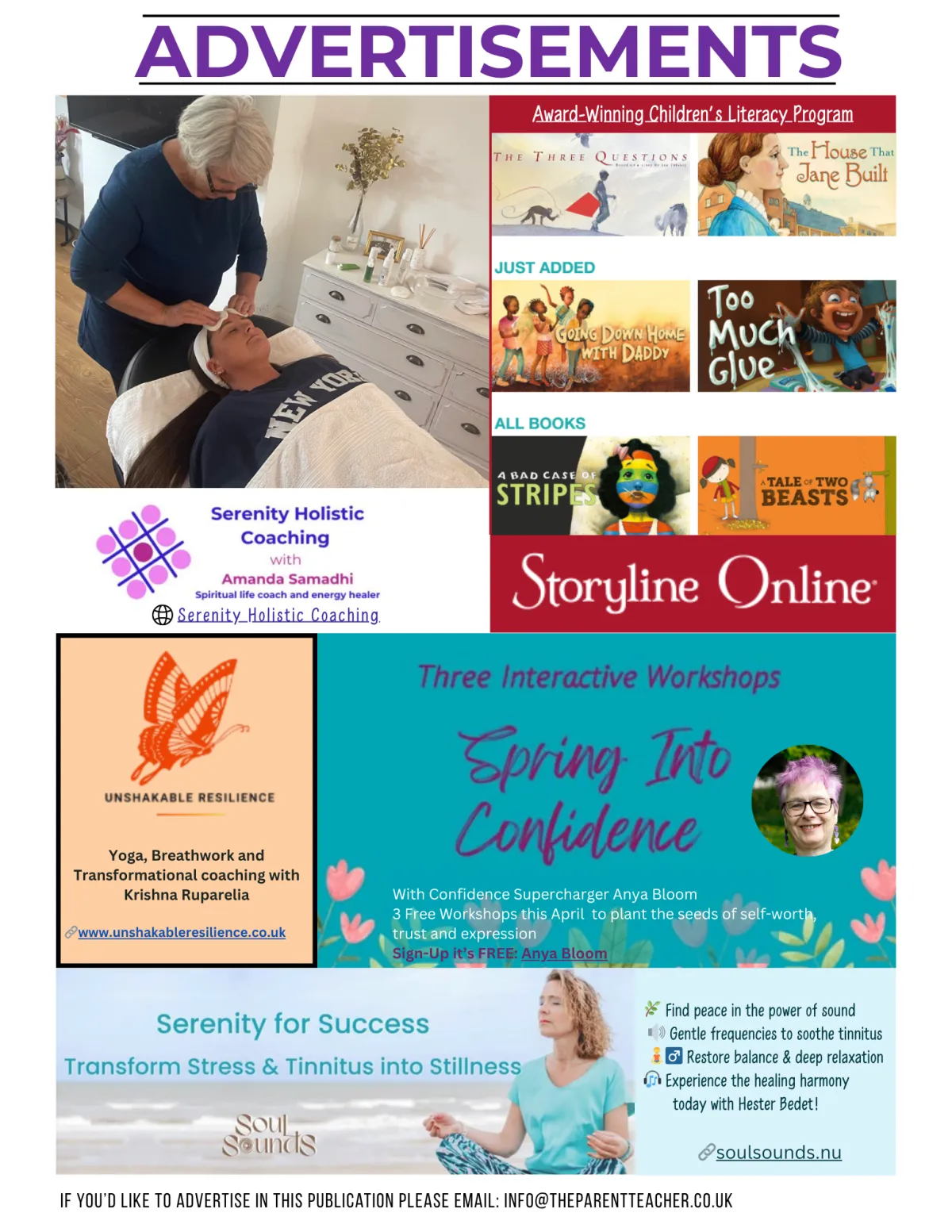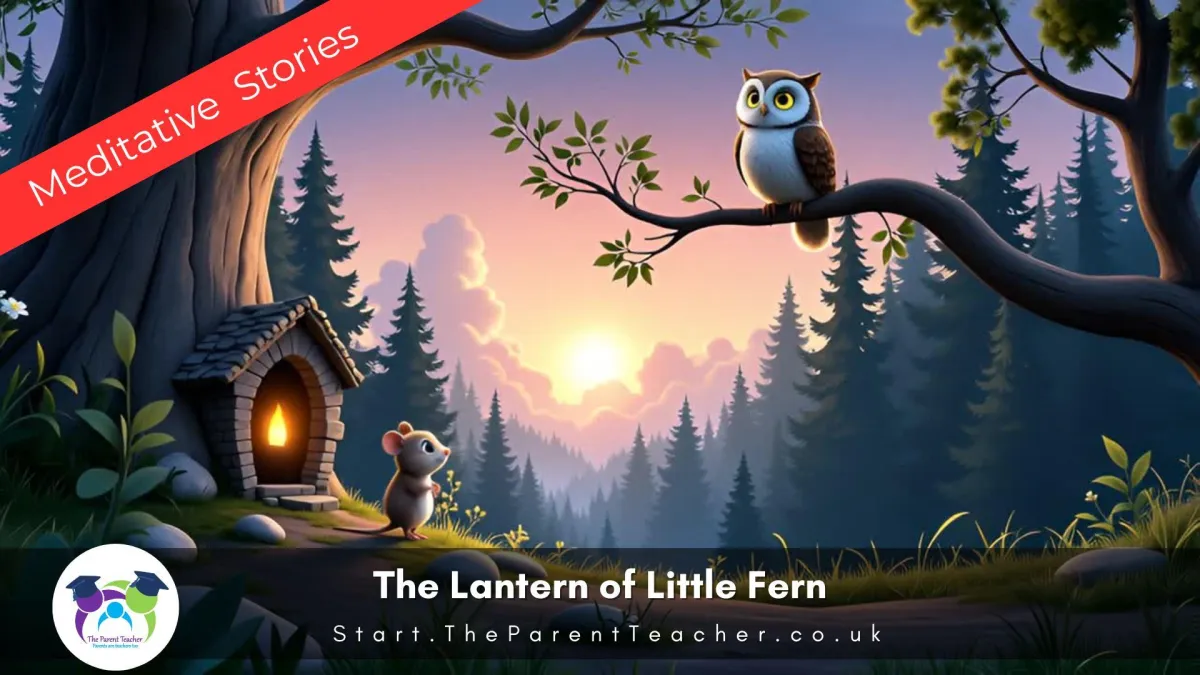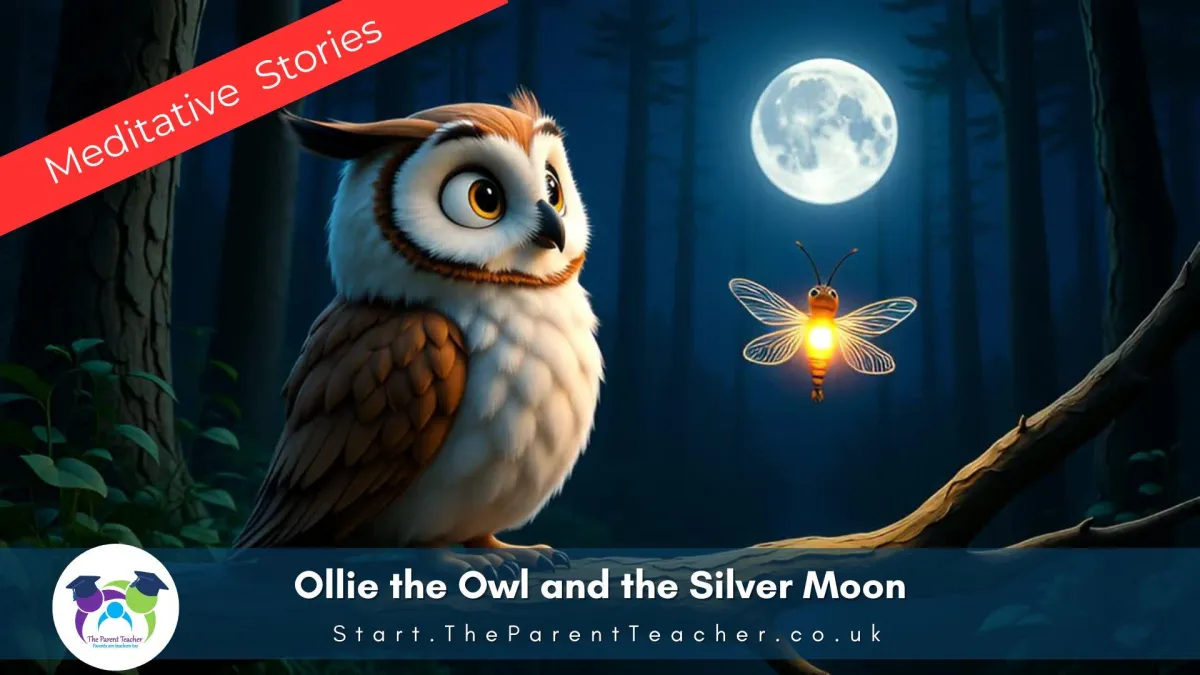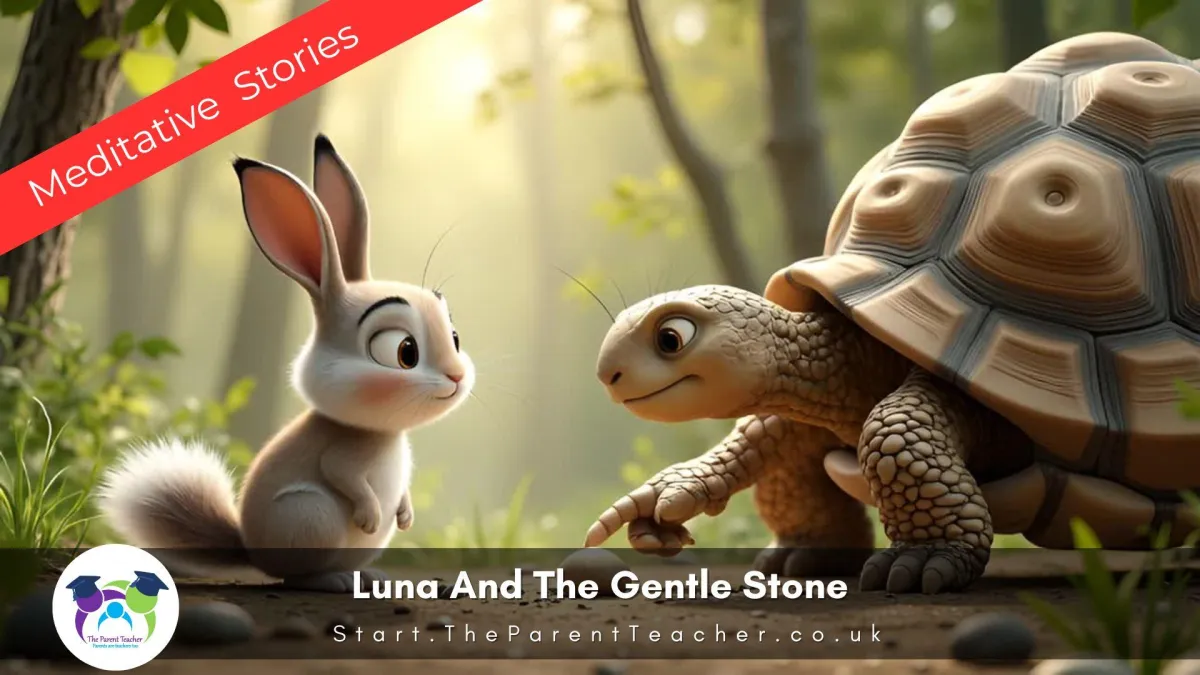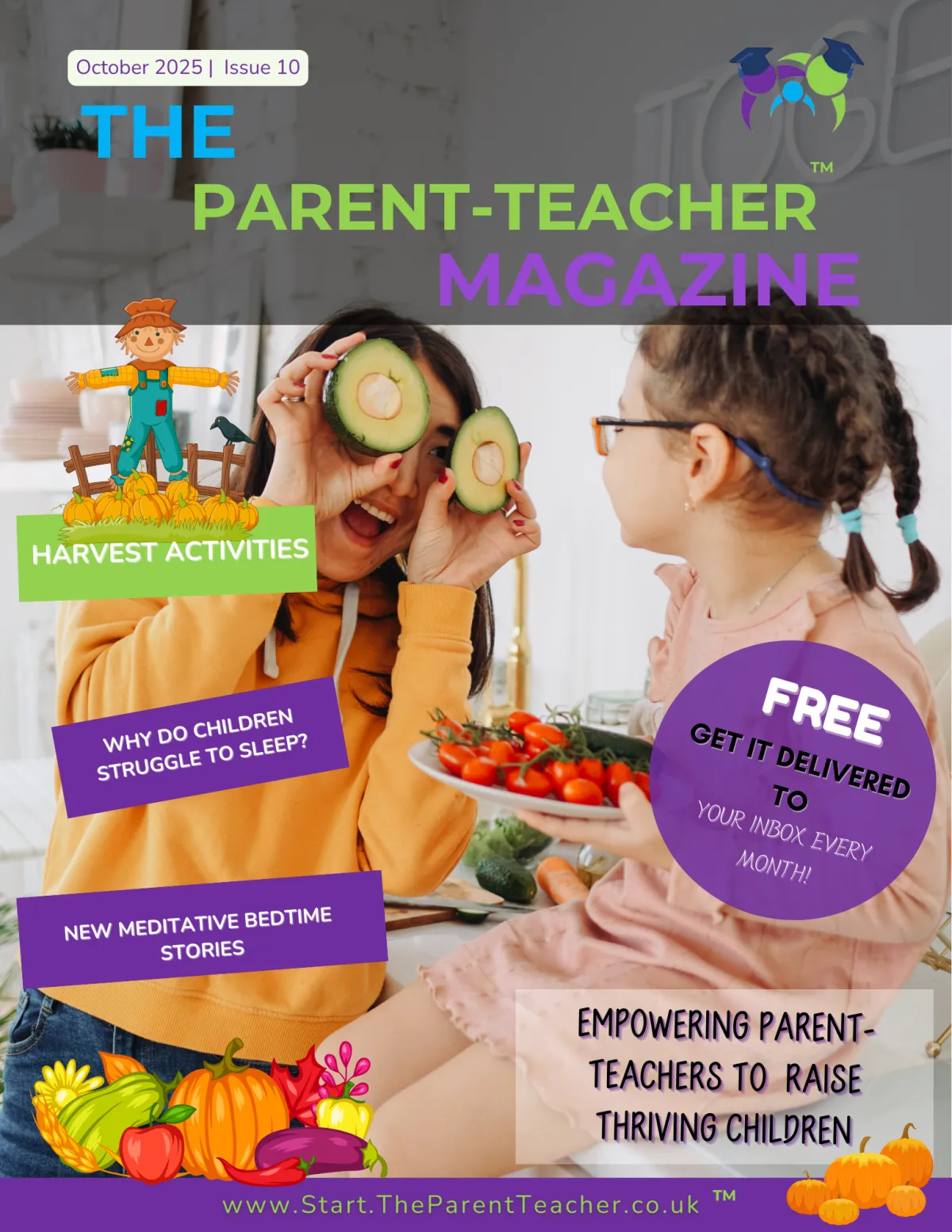
From
the
editor
"When parents become better teachers, children don’t just survive—they thrive."
– Sabina
🍂 Yay—it’s October!
The leaves are turning, the jumpers are coming out, and school is officially in full swing. Routines are settling (mostly!), and children are deep into learning—but this is also the time of year when tiredness can start to creep in.
That’s why this month’s issue is all about keeping motivation strong and minds supported, as we head into the longer evenings. Inside, you’ll find easy ways to help your child stay focused at home—without the battles—and fun autumn activities that sneak in learning while still feeling like play.
We’re also featuring an inspiring story from our Parent-Teacher Support Group about what happened when one mum finally said: “This is too hard for him—and for me.” What followed sparked a powerful movement that’s still growing.
So grab a warm drink, settle in, and enjoy this cosy, supportive issue—made to help you and your child feel steady, seen, and supported this October. 🍁
With warmth,

Editor-in-Chief
(Editor’s note: Let me know how the tests went—we’d love to hear your stories!)

About
the
editor
Meet Sabina Bashir: Empowering Parents, Teachers and Children to Thrive
With 30 years of teaching experience and expertise in psychology, child development and neuro-development, Sabina is on a mission to revolutionise how we support children’s mental health and growth. Inspired by her daughter’s mental health challenges, Sabina embarked on groundbreaking research into how parenting and teaching styles influence children’s wellbeing, uncovering the transformative power of alignment.
Believing parents are children’s first and most influential teachers, Sabina launched The Parent-Teacher Magazine — a resource designed to provide parents and teachers with practical tools, expert advice and inspiration to confidently support their children’s learning and development.
“I want parents to feel empowered,” says Sabina. “Their role is crucial in shaping a child’s future, but too many hand that responsibility over to teachers feeling powerless. My aim is to change that.”
Sabina’s vision is simple yet profound: to empower parents and teachers to work together, creating a future where every child flourishes emotionally, socially and academically.
In this issue...
4
Home education is not schooling
What's the Difference?
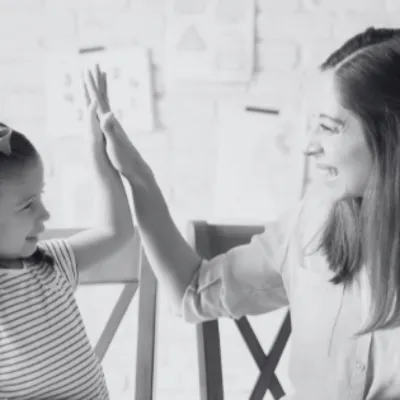
7
Children's wellbeing Journals
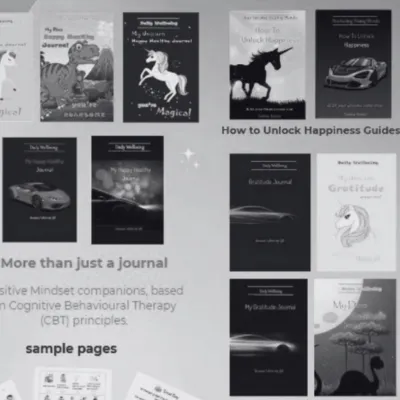
8
Answering Parents Questions
Why do children struggle to sleep and what you can do to help

12
Bedtime Tools for relaxing sleep
Meditative Bedtime Stories

13
Why do Leaves change colour in autumn
Autumn Activity

14
Harvest Hands - Activity
Celebrate the spirit of harvest with creativity and gratitude
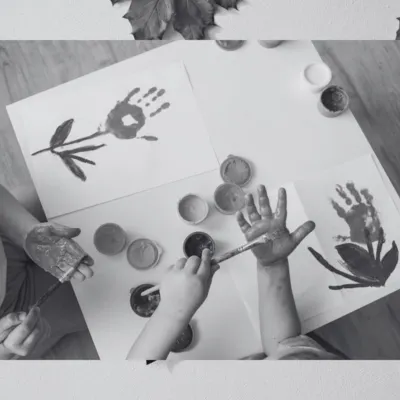
15
Supporting your child's learning at home
Without loosing your mind

17
Free Learning Resources
For this month
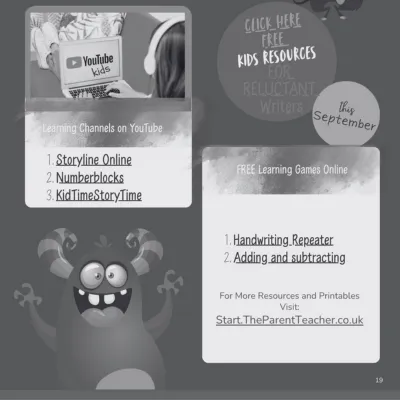
18
Interview - Vanessa Frater-Robertson
Mindset Confidence Coach

Home Education Should not be like Traditional Schooling
What's the Difference?
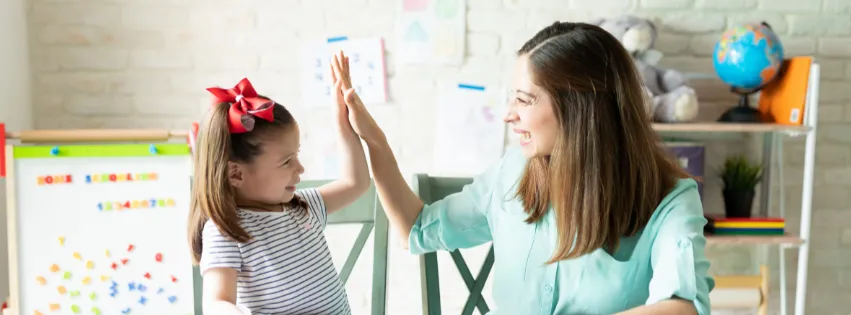
"Homeschooling" Is Not the Same as "Schooling at Home"
First, What Parents Often Think:
“I have to recreate school at home — a strict schedule, a desk, formal lessons from 9 to 3, multiple subjects per day, and constant structure — or my child will fall behind.”
This mindset leads to stress, burnout and a feeling of failure — for both the parent and the child.
School at Home
Mimics traditional classroom
Follows rigid time blocks
Requires parent to act like a “teacher” all day
Emphasis on curriculum completion
Can feel like a power struggle
True Home Education
Adapts to the child’s pace, interests and family rhythm
Allows flexible schedules
Parent is more of a guide, learning partner
Emphasis on mastery, curiosity, and real-world learning
Child centred and collaborative
🌱1. Pace & Personalisation
Home-school: Children learn at their own pace, allowing deeper understanding and less stress.
Traditional School: One-size-fits-all pace, which may leave some kids behind or bored.
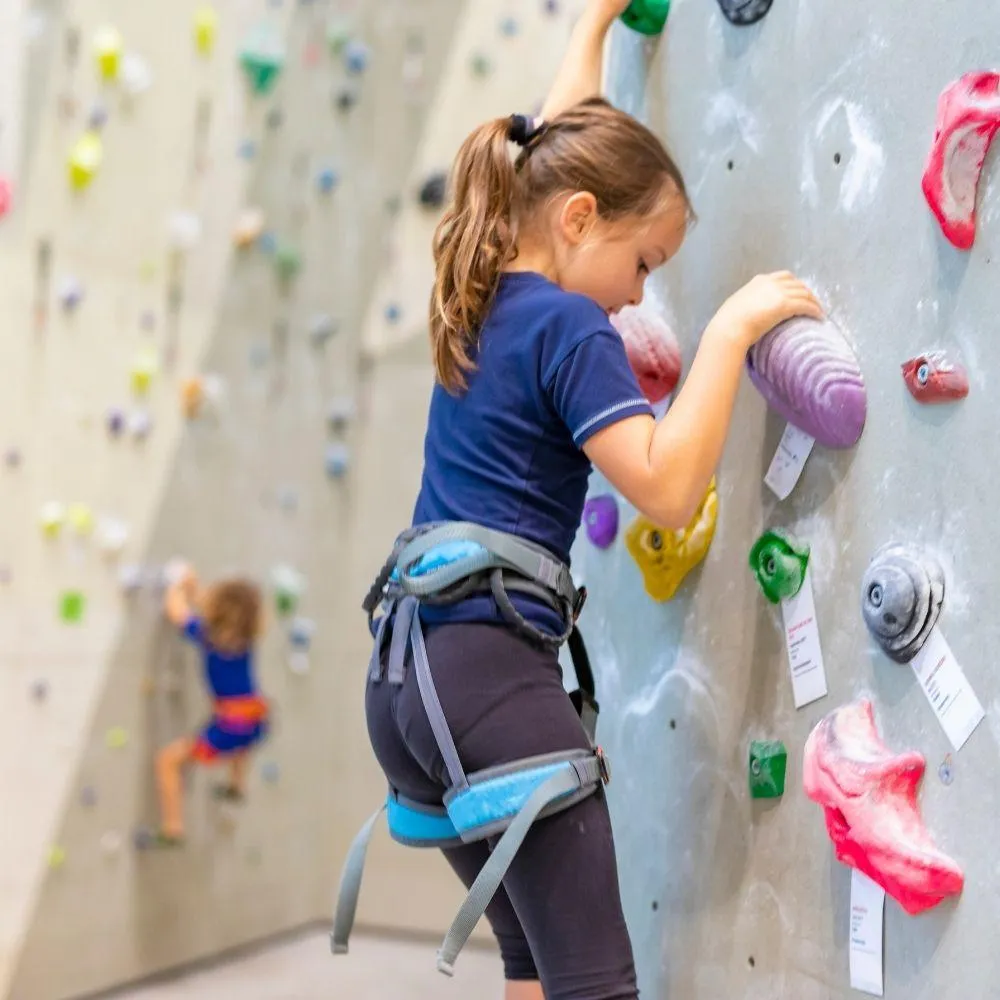
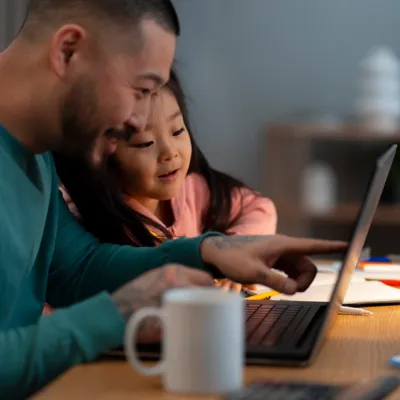
🎈2. Curriculum flexibility
Home-school: Children learn at their own pace, allowing deeper understanding and less stress.
Traditional School: One-size-fits-all pace, which may leave some kids behind or bored.
🌱3. Emotional Safety & Confidence
Home-school: A secure, low-pressure environment helps children feel safe to express themselves.
Traditional School: Peer pressure, bullying, or rigid expectations can hinder self-esteem.
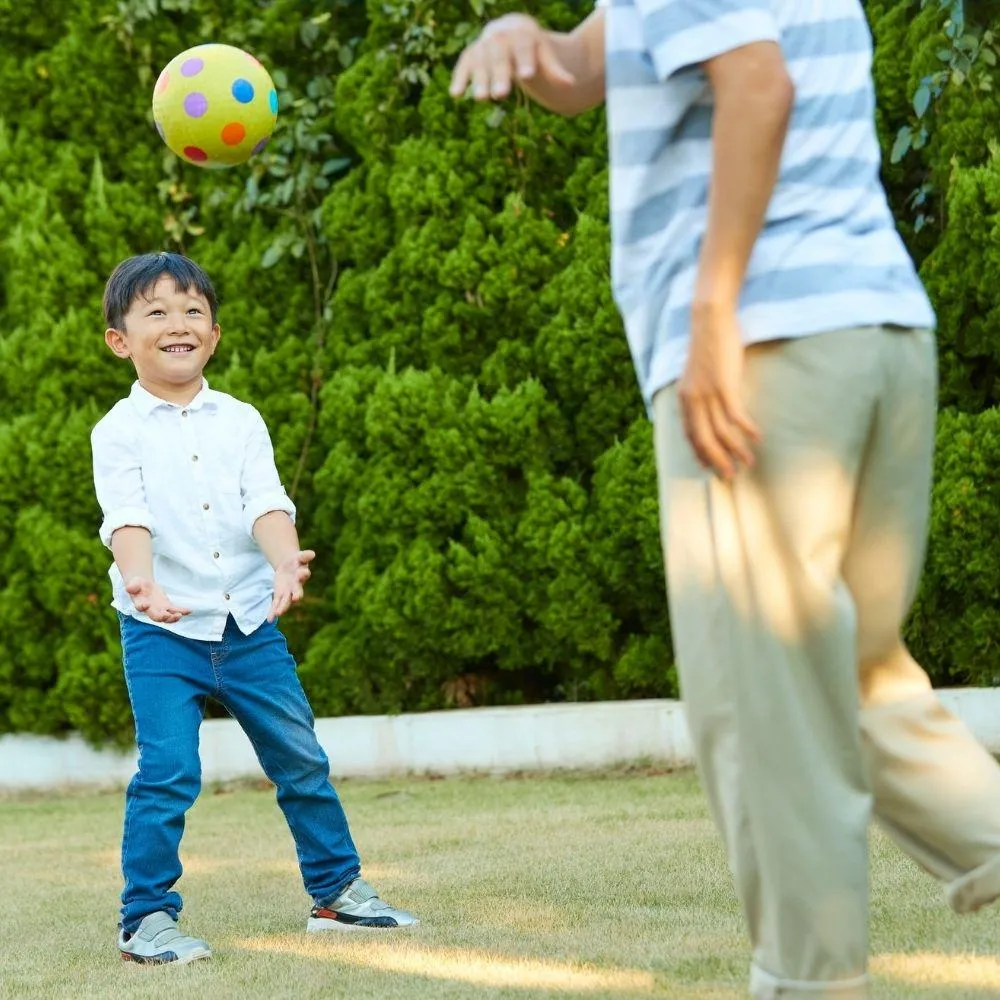

🎈4. Time Efficiency
Home-school: Academic work often takes less time—leaving room for hobbies, play and rest.
Traditional School: 6–8 hour days often include waiting, transitions, and busywork.
🌱5. Life skills integration
Home-school: Real-world skills (cooking, budgeting, gardening) are naturally built into the day.
Traditional School: Life skills are usually supplemental, if taught at all.


🎈 6. Stronger Family Bonds
Home-school: More quality time fosters emotional connection and mutual understanding.
Traditional School: Long separations can strain family dynamics.
🌱7. freedom and Flexibility
Home-school: Guide them through researching it online or in books, or real life experiences such as going shopping for maths, going on holiday to learn geography.
Traditional School: Learning through books and worksheets with little physical application to the real world.
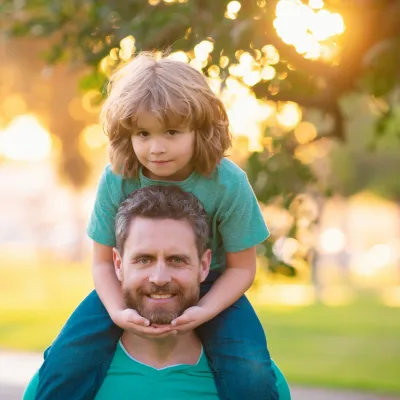
💬Final Thought
Homeschooling isn’t about replicating school at home—it’s about reclaiming learning as a natural, flexible process that grows with your child. While traditional schools follow structured systems designed for the masses, home-schooling allows you to create an environment where your child is seen, heard and supported as a whole person.
Yes, doubts are normal. But remember:
You already teach your child every day—values, language, habits, love.
Homeschooling doesn't mean chaos. It just means a different structure — one that works for your family. A flexible template keeps you on track without locking you into a rigid system.
Example Weekly Template:
Day
Mon
Tues
Wed
Thurs
Fri
Subject
Maths, Reading
Science, Art
Writing, History
Review, English
Life Skills, Social
Activities
Worksheet, storytime, Nature Walk
Kitchen Science + Drawing Project
Journal Entry+ History podcast or Story
Games, Board Learning, review, Quizzes
Cooking, budget, playdate, virtual meetup
For more information and support: Home-Schooling /Home Education
5


Why Do Children Struggle to Sleep at Night
(and What Can Parents Do to Help?)
You’ve done the bedtime routine.
The story’s been read, the lights are low, and the house is finally quiet...
Until a little voice calls out.
Another glass of water.
Another cuddle.
Another, “I can’t sleep.”
Sound familiar?
If your child struggles to sleep through the night, you're far from alone.
Children waking at night isn’t always a problem to fix — sometimes, it’s a message to understand. Their restlessness might be revealing something deeper: an overwhelmed mind, an overstimulated body, or a need for more connection.
Let’s explore why children wake up, what it really means, and how you can gently support better sleep — for your child and for you.
1. Brain Development
Children’s sleep cycles are naturally lighter and shorter than adults'. Waking during the night — especially in younger years — is normal. Their nervous systems are still learning how to transition through deeper stages of rest.
They're not behind — your child’s brain is just doing its job.
2. Emotional Overload
Big emotions don’t always show up when they happen. Often, they surface at bedtime — when the noise stops and the brain starts sorting the day.
Excitement, anxiety, overstimulation or even small unresolved worries can all affect their ability to stay asleep.



8
3. Environment & Habits
Too much screen time, bright bedroom lights, loud sounds or inconsistent sleep cues can confuse the body’s natural rhythms. Even well-intended routines — like long naps or varied bedtimes — can create internal resistance to rest.
4. Attachment & Reassurance
For many children, night wakings are less about discomfort and more about connection. Sleep requires a sense of safety — and sometimes, that comes from knowing you’re nearby.
Reassurance isn’t spoiling; it’s stabilising.
So What Can You Actually Do?
Here’s the good news:
✅You don’t need a perfect schedule.
✅You don’t need to be stricter.
✅You don’t need to do more.
✅You just need the right tools, used consistently, with compassion.
Let’s break it down.
1. Regulate Before You Expect Rest
Sleep doesn’t start at bedtime — it starts hours before.
The body needs time to wind down from stimulation and re-enter a calmer rhythm.
Here’s how to guide that:
✅Lower lights and reduce noise after dinner
✅Avoid screens 1 hour before bed (blue light disrupts melatonin)
✅Encourage quiet play, drawing, or puzzles
✅Use calming language like, “We’re getting ready for rest”
✅Try a warm bath or gentle stretching to release physical tension
This isn’t about doing more — it’s about doing what matters.

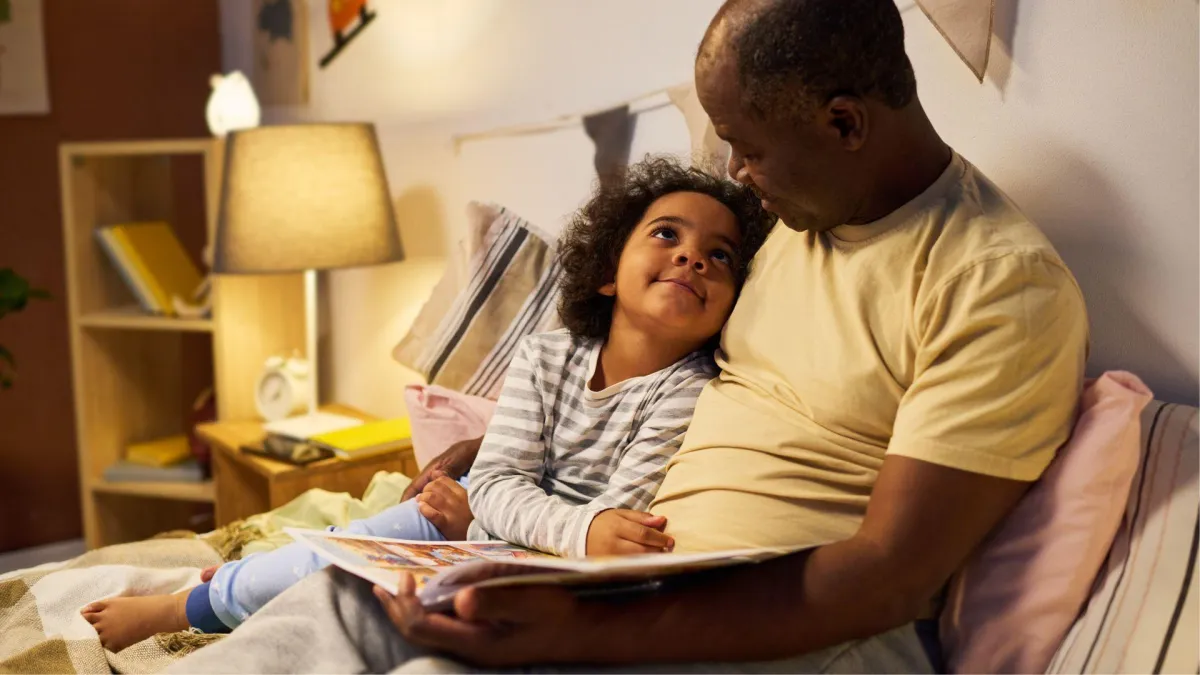


10
2. Use Connection as the Calm
Children sleep best when they feel safe.
And nothing builds safety like a moment of intentional connection.
Try this:
✅Set aside 10 minutes of "special time" — no phones, no distractions
✅Offer grounding affirmations like:
“You’re safe. You’re loved. You can rest now.”
✅If they wake at night, meet it with calm instead of frustration
✅Create a simple mantra to repeat: “It’s safe to sleep. I’m right here.”
Connection doesn’t spoil sleep — it supports it.

3. Try Meditative Bedtime Stories
Even when the house is still, your child’s mind might not be.
After a full day of screens, learning, movement and emotion, many children lie in bed with restless thoughts and unsettled energy.
They don’t need more distractions — they need a bridge to stillness.
That’s why we’ve created Meditative Bedtime Stories — calming, imaginative audio journeys designed to help children unwind, detach from the day and ease gently into sleep. See below for more details.
Final Thoughts: You’re Not Alone in This
If sleep has become a nightly battleground, pause and breathe.
This isn’t about you being too tired, too soft, or too inconsistent.
It’s about a child learning how to feel safe in stillness — and you being their gentle guide.
There’s no single fix. But with small, intentional steps and a few grounded tools, you can create a bedtime rhythm that feels calm, connected and truly restful. And if nothing else works - try our meditative stories:
11
The Bedtime Tool Parents Didn’t Know They Needed
Why Meditative Bedtime Stories Are Helping Kids Sleep Naturally
Struggling with bedtime?
We’ve just released a new kind of bedtime story — created to help children really calm down and fall asleep.
No screens. No stress. Just deep relaxation.
After a full day of screens, learning, movement and emotion, many children lie in bed with restless thoughts and unsettled energy.
They don’t need more stimulation — even in the form of an exciting bedtime story. They need a bridge to rest.
That’s why we created Meditative Bedtime Stories — calming, imaginative audio journeys that gently guide children from busy minds to deep sleep.
Each story begins with a peaceful narrative and often flows into a soft guided meditation — helping your child unwind, feel safe and drift off naturally.
Why It Works:
Calms the nervous system
Encourages self-soothing
Supports emotional regulation
Loved by kids ages 4–10
You’re not failing at bedtime. You just needed the right tool.
👉 Try it tonight:
12
Why Do Leaves Change Colour in Autumn?
The science behind nature's most beautiful transition
by Sabina Bashir

As summer fades and autumn rolls in, something magical happens in the trees around us — green leaves turn vibrant shades of red, orange, and gold. But have you ever wondered why?
It all comes down to chemistry.
During spring and summer, leaves are green because of a pigment called chlorophyll, which helps plants absorb sunlight and turn it into energy through photosynthesis.
But as the days get shorter and cooler in autumn, trees begin to prepare for winter. They slow down their food-making process, and chlorophyll starts to break down. As the green fades, other pigments hiding in the leaves all along — like carotenoids (yellows and oranges) and anthocyanins (reds and purples) — finally get their time to shine.
💡 Eventually, the tree seals off the connection between the leaf and the branch, and the leaf falls — completing one of nature’s most stunning cycles.
So the next time you crunch through a pile of golden leaves, you’ll know: it’s not just pretty — it’s science in action.
🌳 Fun Leaf Facts!
Red pigments are called anthocyanins — the same stuff that makes cherries and apples red!
Some trees, like oaks, hang onto their leaves after they turn brown.
Not all places have autumn colours — tropical trees stay green all year!
AUTUMN ACTIVITY
🌱 Make Your Own Leaf Rainbow
What you need:
A few leaves from different trees
White paper
Crayons (with the paper peeled off)
What to do:
Place a leaf under the paper.
Rub the crayon gently over the top.
Watch the leaf’s shape and veins appear!
Try different colours and leaf shapes to make your own leafy rainbow.
13
Harvest Hands: A Thankfulness Craft for the Season
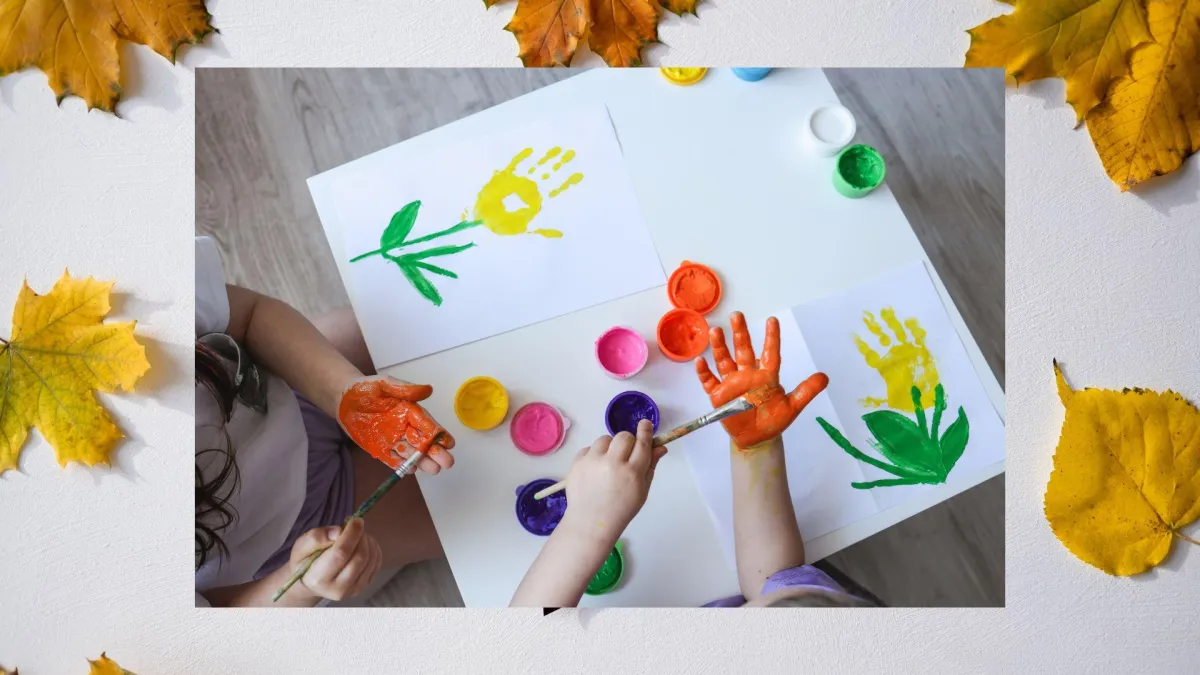
Celebrate the spirit of harvest with creativity and gratitude
Activity Name: Harvest Hands
Age range: 4–11 (easily adaptable for older or younger children)
Focus: Gratitude, creativity and community
Supplies needed:
Coloured paper (autumn tones: red, orange, yellow, brown)
Pencils / paint
Scissors
Glue or tape
Markers or crayons
A large poster board or wall space (optional: tree or basket outline)
🍁 How to Do It:
Trace & Cut:
Have each child trace their hand on a piece of coloured paper and cut it out. Or do a paint print.
Reflect & Write:
On the printed palm of the hand, ask them to write or draw one thing they’re thankful for this season — it could be food, family, nature, pets, school, friends or even warm socks!
Share the Story:
Collect all the hands and create a “Harvest Tree of Thanks” on a wall or a “Gratitude Basket” display. You could also glue them in a circle to make a Harvest Wreath. or make a thankful garden.
🌟 Optional Extension:
Pair the craft with a short story or song about harvest, generosity, or gratitude (e.g., The Enormous Turnip, Cauliflowers Fluffy, or a simple poem about autumn).
💬 Why It Matters:
Harvest isn’t just about crops — it’s about community, kindness and taking time to appreciate what we have. This activity helps children connect with those values in a fun, creative way.
✨ Top Tip: Turn it into a keepsake!
After your “Harvest Hands” display comes down, turn each child’s thankful hand into a mini gratitude book.
Simply punch a hole in each hand, tie them together with ribbon or string as a heartwarming reminder of the season.

14
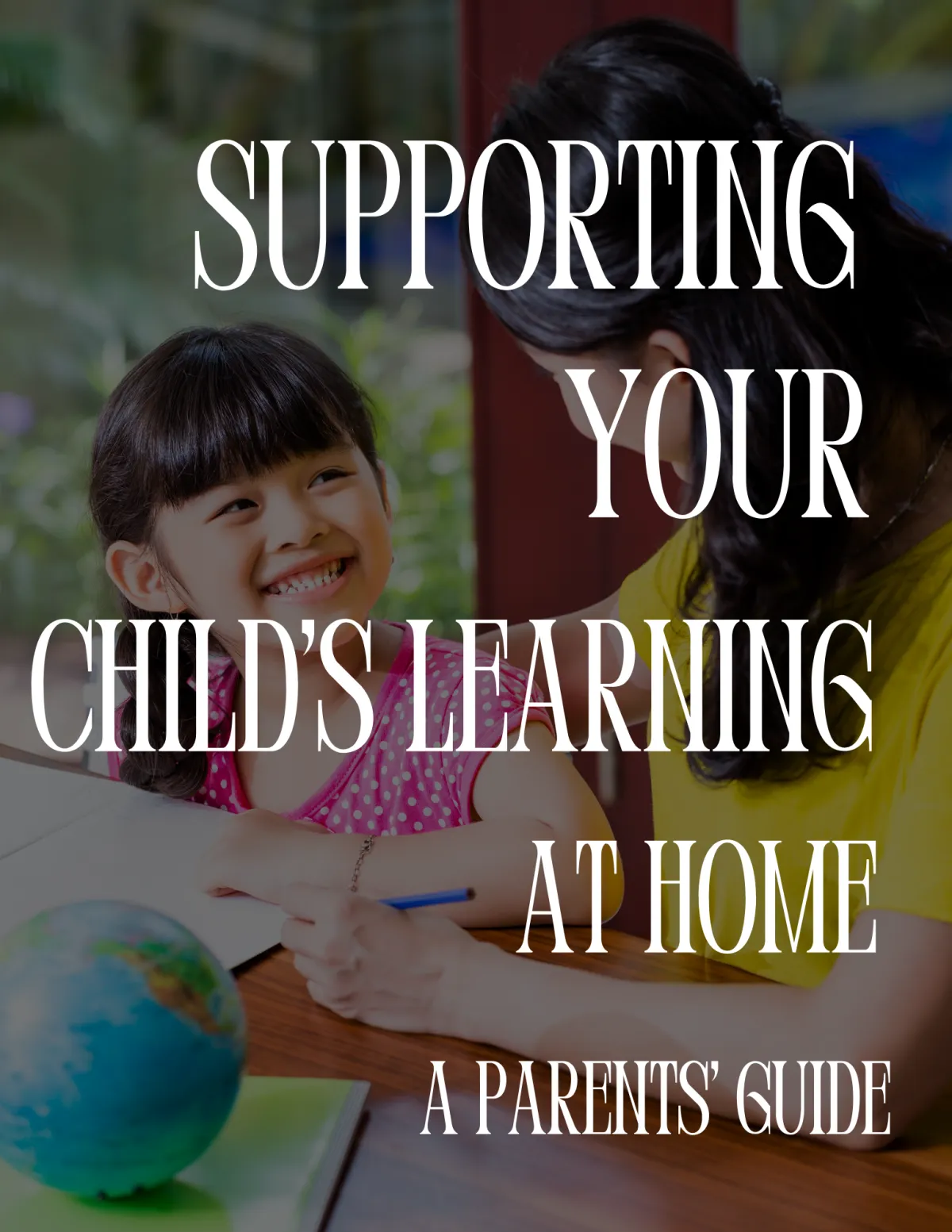

Supporting Your Child's Learning At Home Without Losing Your Mind
It was a rainy afternoon when Jacob’s mum came to collect him from Mrs Langley’s class: The classroom next door to mine. I heard raised voices.
Jacob, age 9 and had gone home with a worksheet on passive voice the previous night. His mum had stared at it for nearly an hour, trying to help—but couldn’t make sense of it. Neither could he. The night ended in tears.
Now, standing in the classroom doorway, she said what so many parents felt:
“I’m not a teacher! Why send him work that even I can’t understand?”
Mrs Langley replied, flustered but firm:
“We covered it in class. I understand what you are saying but I can’t teach the parents too. That’s not my job.”
I understood them both.
As a parent, I knew that helpless feeling.
As a teacher, I knew the pressure to keep moving forward.
Both were right. Both were wrong.
There was a gap—and children like Jacob were stuck in it.
Something needed to be done
✅That's Why I Built A Bridge
The Parent-Teacher Support Group—a monthly space where parents can:
• Learn the basics of what their child is learning
• Get tips for supporting homework
• Share struggles without shame
We run short, practical workshops on maths, reading and managing homework stress.
Ideal for parents who are home-schooling, home educating or simply helping with homework—offering insight without judgment.
✅Need Support Too?
If you’ve ever felt lost helping your child with schoolwork—you’re not alone.
Magazine members got early access to the group last month (check your spam if you missed it!). New subscribers can join for free—(donations are welcome to keep it going).
As I always say:
“Children don’t just need teachers at school—they need parent-teachers at home, too. Not perfect ones. Just parents who are willing to learn beside them.”
For More information: The Parent Teacher Support Group
16
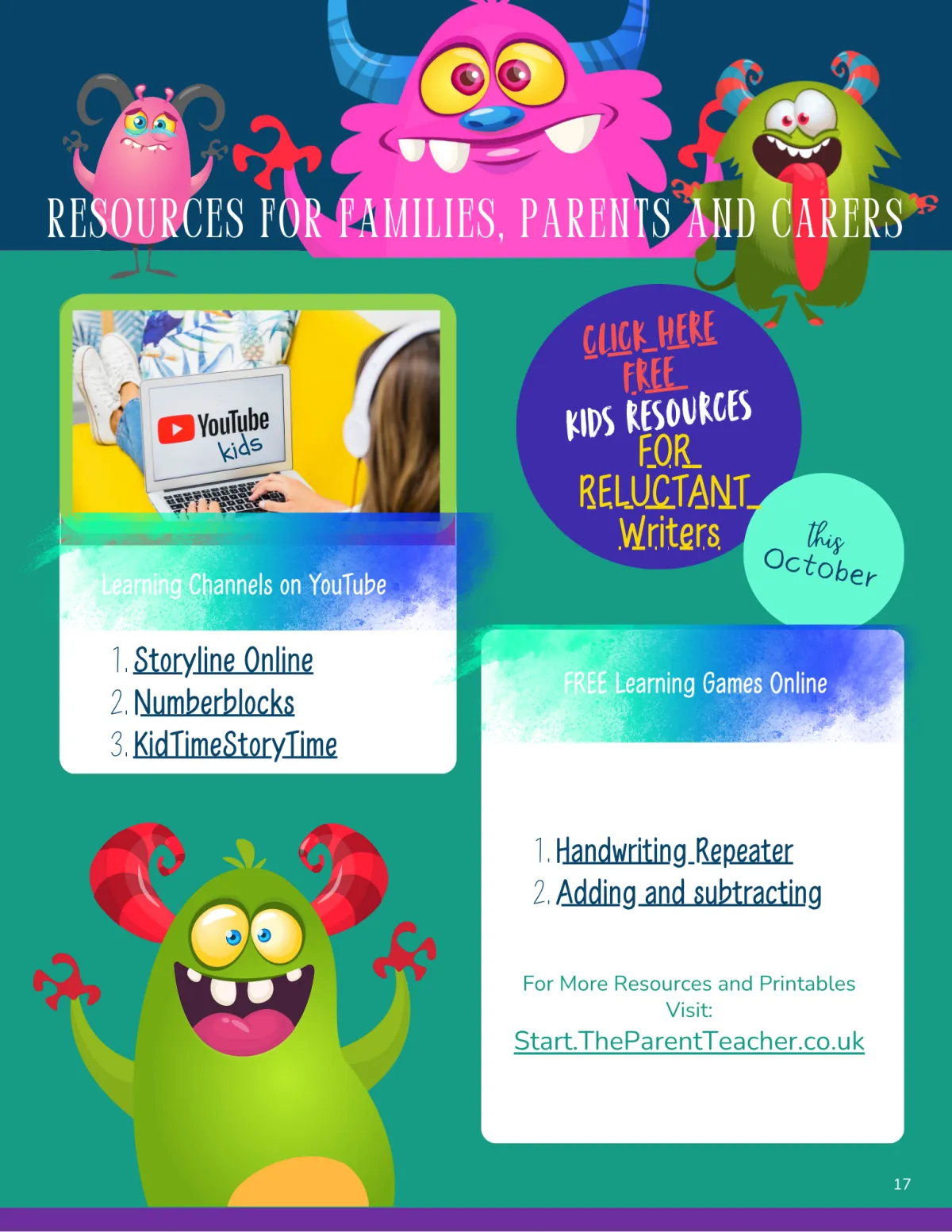
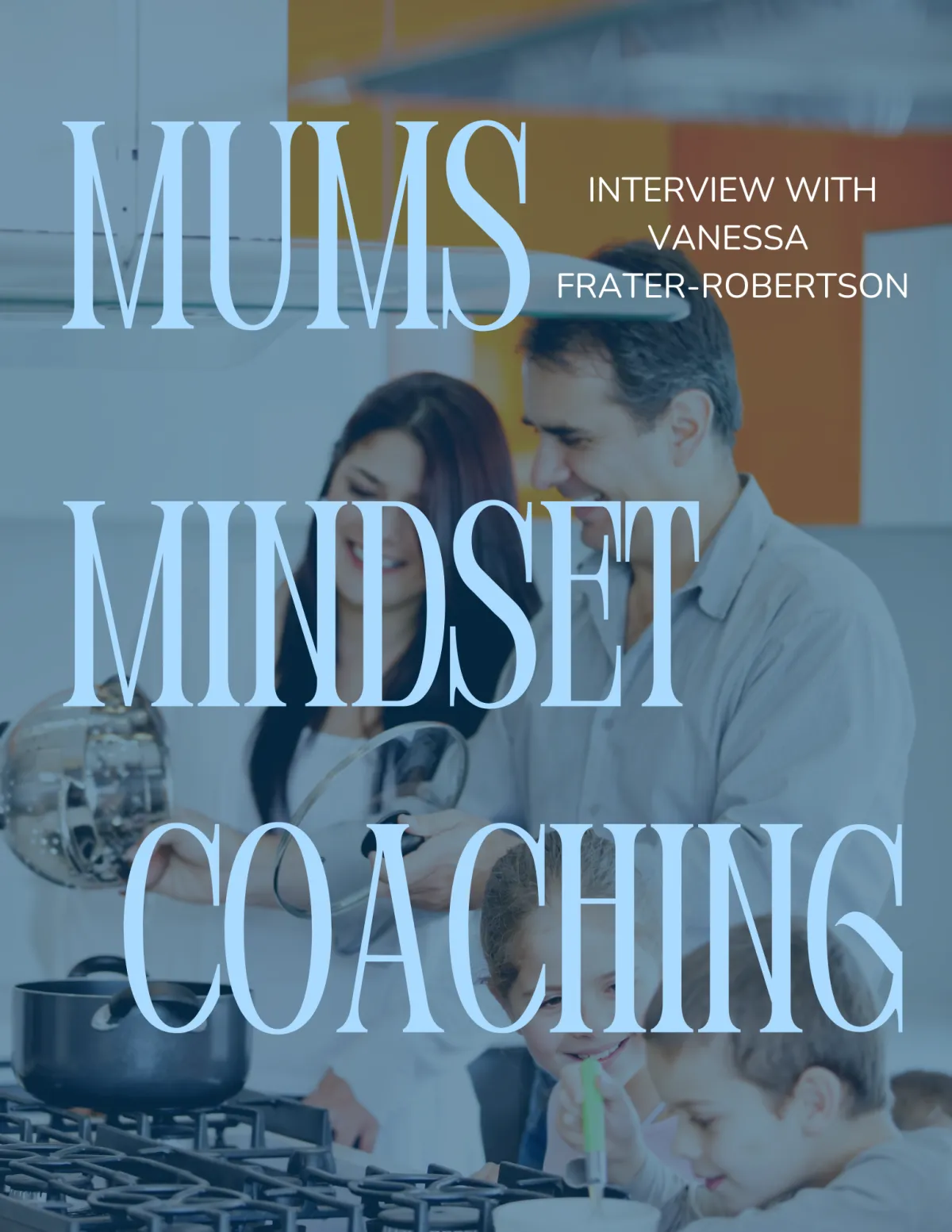


Confidence Coaching

Interview with Vanessa Frater -Robertson
The Mindset Confidence Coach for Mums
Sabina Bashir: Today, we have something really special for you. I’m excited to introduce Vanessa Frater-Robertson – a Mindset and Confidence Coach dedicated to supporting mums who feel a little stuck and unsure of how to create the life they truly want.
Vanessa works with mums who are ready to rediscover their confidence and make the mindset shifts needed to change their current reality. If you’ve ever felt like there’s more out there for you – but you’re not quite sure how to reach it – then you’re in for an absolute treat. So let's all welcome Vanessa.
Vanessa Frater-Robertson: Thank you Sabina. It's lovely to be here.
Sabina Bashir: So let's start with what everyone is dying to know - What do you do and how do you help mums?
Vanessa Frater-Robertson: I help mums rediscover their voice, rebuild their confidence, and step into their full potential without guilt. As The Confidence Catalyst Coach, I work with women, especially faith-based professional mums, who feel pulled in a thousand directions. Through my Transformative Life Launchpad Programme™, I guide them to gain clarity, craft achievable success plans, and develop the confidence to speak boldly at home, at work and in their communities. My goal is to help mums show up powerfully in every season of life, without losing themselves in the process.
Sabina Bashir: That's so great. Many mums feel like they lose their voice once they become parents. Often all the attention shifts to the child, and you feel pushed into the background. What are some simple steps mum can take to start speaking up with more confidence at home and in their communities?
Vanessa Frater-Robertson: It starts with small, intentional steps:
❤️Pause before you agree: Give yourself permission to say, “I’ll think about it,” instead of automatically saying yes.
❤️Use “I” statements: Practice saying, “I feel…” or “I need…”, this affirms your voice matters.
❤️Speak in safe spaces: Share your thoughts first in supportive circles (trusted friends, women’s groups, church groups). As your confidence grows, expand outward.
❤️Anchor in your values: When you know what truly matters to you, it becomes easier to speak up without apology.
Confidence doesn’t happen in one big leap; it builds through everyday practice.
Sabina Bashir: Great tips and so true. Now, for those mums who sometimes struggle with self-doubt, I know I was one of these mums many years ago, and sometimes even now, what practical tools or affirmations can help them lean into their confidence?
Vanessa Frater-Robertson: Faith and confidence are deeply connected. A few tools that help are:
❤️Daily affirmations rooted in scripture: such as: “I am fearfully and wonderfully made” (Psalm 139:14). Speak this out loud until your heart believes it.
❤️The Truth Swop Exercise: When self-doubt says, “I’m not enough,” replace it with, “I am equipped and called for this moment.”
❤️Journaling prayers: Write down your fears, then surrender them in prayer. Seeing them on paper often reduces their power.
❤️The Power Pose: Two minutes of standing tall with open posture reminds both your body and mind that you were created to stand strong.
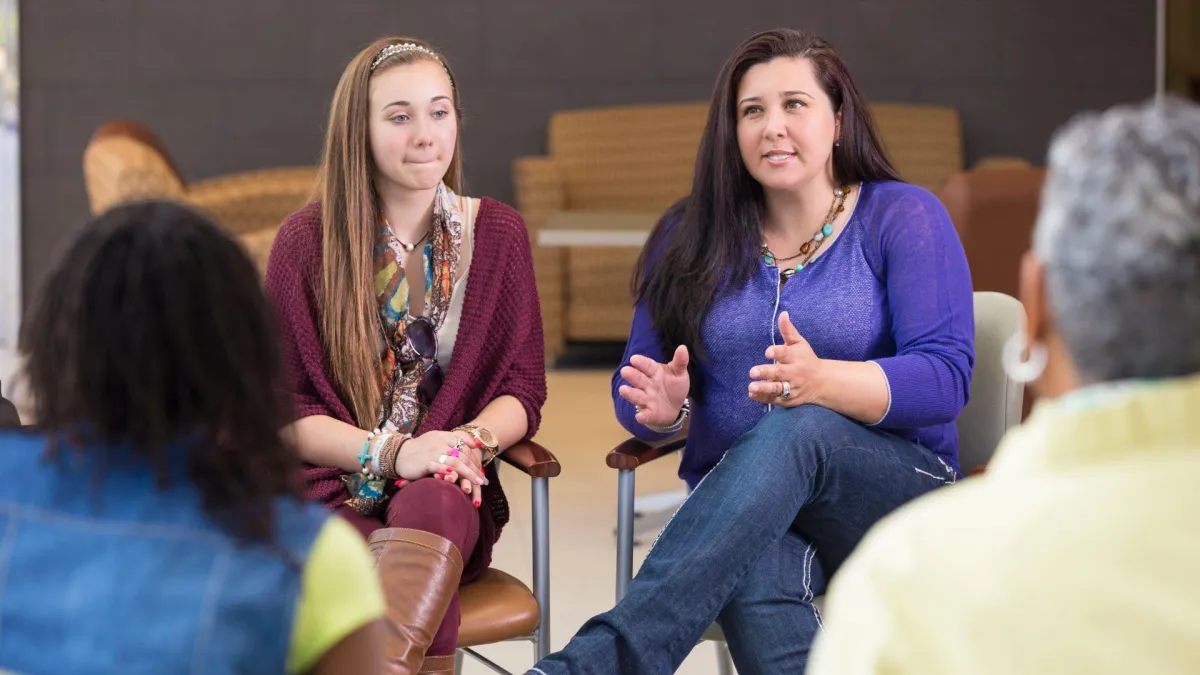
Sabina Bashir: These are great. I know you are Christian and you draw a lot of strength from your faith, but for others who follow different faiths these tips still apply, so thanks for sharing these.
Life as a mum can feel overwhelming - what advice can you give to women who want to lead confidently but are juggling family, work and personal wellbeing?
Vanessa Frater-Robertson: You don’t have to “do it all”, you just need to do what matters most. My advice is:
❤️Set guilt-free boundaries: Saying no is an act of leadership.
❤️Prioritise small wins: Celebrate what you do achieve instead of focusing on what’s left undone.
❤️Create non-negotiables: Whether it’s prayer, journaling, or a daily walk, protect time that nourishes your wellbeing.
❤️Lead with authenticity: Your children and community don’t need a perfect mum; they need a present, confident one.
❤️Leadership starts at home, with how you lead yourself.
Sabina Bashir: Thank you for those, I'm sure many of our readers will find these helpful.
What’s one small confidence habit a mum could start today that would not only improve her wellbeing but also positively influence her child’s growth and resilience?
Vanessa Frater-Robertson: Start with a daily declaration of gratitude and strength—out loud.
For example:
"Today I choose courage. I am grateful for the strength God has placed in me, and I will lead with love."
When children hear their mums affirming themselves, they not only see resilience modelled but also learn to develop their own voice of confidence. It’s a simple habit that creates a ripple effect of courage in the next generation.
Sabina Bashir: Wow! That is so good. I'm going to start doing that one and hopefully it will rub off on my daughter too. It's so true, children will copy if they see you doing it yourself, so it is much easier to model it, than to just tell them to do it. Thank you so much for these nuggets of wisdom, I'm sure many of our readers will have found these super helpful.
If any one would like to work with Vanessa directly and make some real life-changing shifts in your lives, then her details can be found below. Thank you again Vanessa, that was awesome. And I hope everyone found this super helpful too.
Website: www.vanessafraterrobertson.com
LinkedIn: https://www.linkedin.com/in/vanessafraterrobertson/

